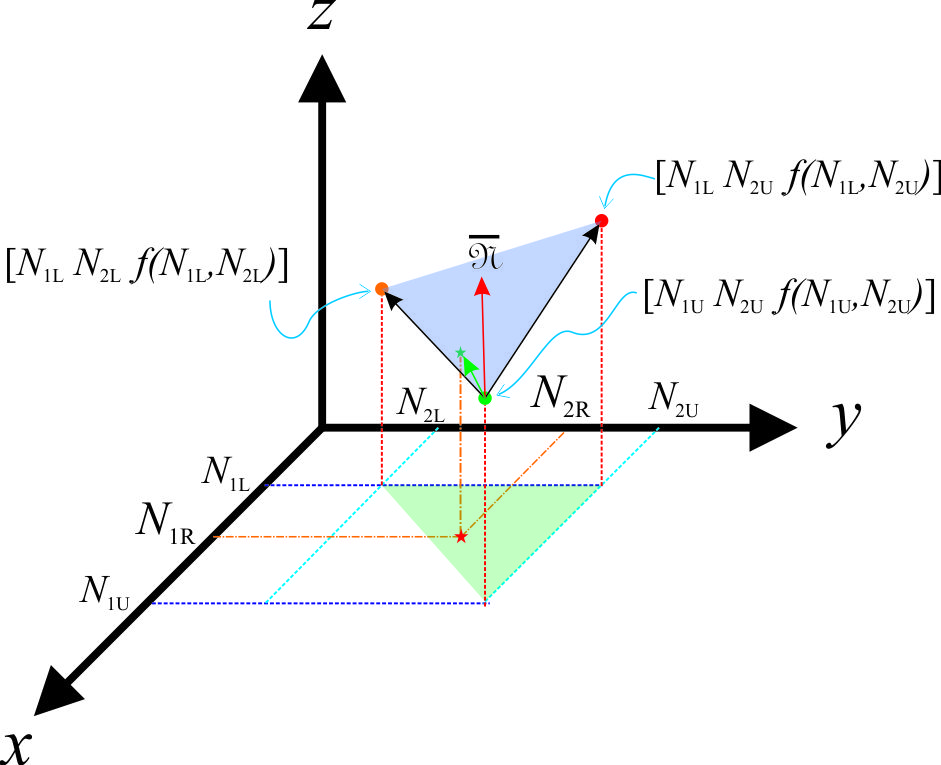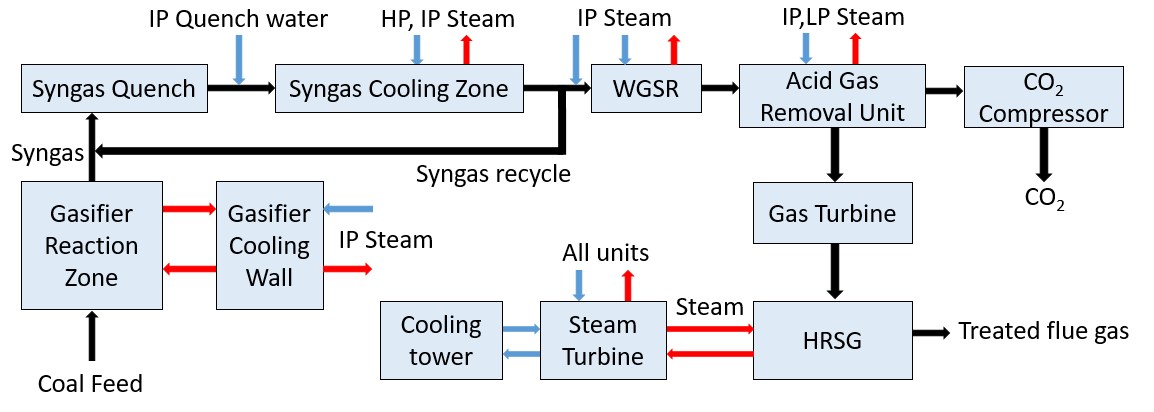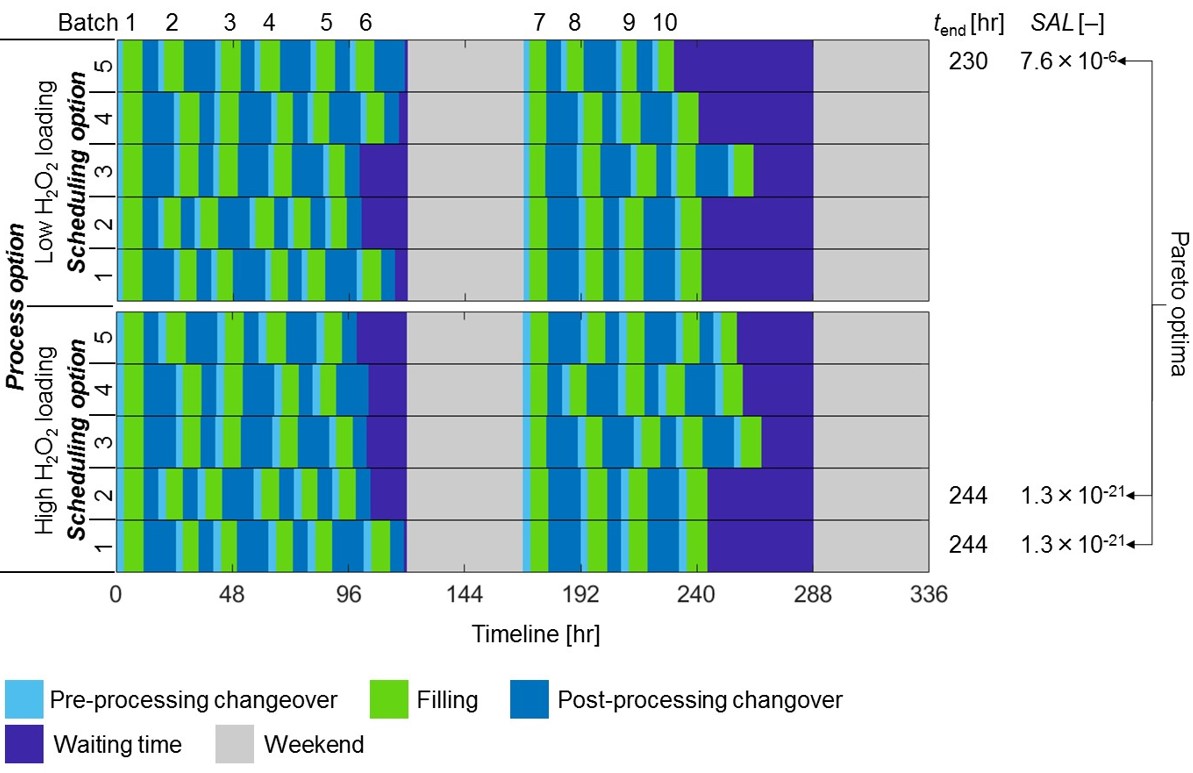
Though a global optimization procedure using a randomized algorithm and a commercial process simulator is easier to implement for complex design problems, a dominant problem is a heavy computation load. As the process simulation is repeatedly executed to calculate the objective function, it is inevitable to spend long computation time to derive the optimal solution, especially when the target process has recycle flows that need convergence calculation. Thus, the reduction of the number of iterations is crucial for such an optimization procedure.
Though some design variables such as the number of stages of a distillation column can take only an integer value, in most cases optimization algorithms derive continuous values as the next promising search point. Thus, the process simulation must be executed by rounding off them to integer values. This rounding step affects the selection of the next search point in the optimization procedure. In this work, an estimation procedure of the objective function having integer design variables is proposed. In the proposed procedure, the values of the objective function at the nodes of hyper-triangle that includes the suggested next search point are used to estimate the objective function at the suggested next search point. Figure 1 shows a two-dimensional case. In this example, the objective function at point (NR1, NR2), f(NR1, NR2) is estimated by using the objective function values at three integer points, (N1L, N2L), (N1L, N2U) and (N1U, N2U).
The proposed procedure is applied to the optimal design problem of a distillation process. Simulated annealing is used as the randomized algorithm. The results showed a significant reduction of the number of iterations, and the results were the same or better than those obtained by the traditional optimization implementation. In the presentation, the effect of normalization of design variables is also explained.

Although the efficiency and energy contribution of renewable energy is rapidly growing, coal is still an important fuel to meet the global energy demand. The integrated gasification combined cycle (IGCC) has high efficiency and minimum cost penalties, compared with conventional coal power plants. Since the operational change of one unit in the integrated IGCC process can influence the other units, techno-economic analysis for performance and cost assessment of the integrated overall process is essential. Furthermore, the techno-economic analysis of IGCC with carbon capture process (CCP) for various types of coal is important because about 53% of global coal reserves are of low rank with various qualities.
In this study, a techno-economic analysis of the entire syngas process including carbon capture unit was conducted for a 500 MW-class IGCC with Shell gasifier using various types of coal. The process simulation of the integrated syngas purification process was performed using Aspen Plus. The performance of Shell gasifier using various coals was simulated using a gPROMS software package.
Firstly, the amount of oxygen and intermediate pressure steam fed to the gasifier were optimized to maximize the cold gas efficiency of Shell gasifier. The parametric analysis of the oxygen to coal feed rate ratio was conducted over the range 0.65~0.85, and the steam to coal feed rate ratio was conducted over the range 0~0.2. Then, the carbon capture efficiency ranged from 80~95% was optimized to minimize the energy consumption of the syngas purification process with a CCP. Finally, to using optimized conditions of gasifier and CCP, a comparative performance evaluation of four difference coals was conducted for the overall IGCC process. And the estimated cost of electricity (COE) considering CO2 T&S cost and coal price was compared among the IGCC processes using four coals (two bituminous coals and two sub-bituminous coals).

Sterile drug products, represented by injectables of biopharmaceuticals, are manufactured in batch processes by filling drug solution into vials/syringes. Decontamination is responsible for establishing the proper environment for filling, which is typically performed by injecting hydrogen peroxide (H2O2) into the environment such as isolators or clean rooms. Manufacturing of sterile drug products requires changeover processes such as decontamination and cleaning which are time intensive. However, a model can deal with scheduling considering the process design of decontamination is not established.
In this work, we present a model for designing simultaneously decontamination processes and scheduling of filling. The model was developed by incorporating two sub-models: decontamination process model and scheduling model. We defined sterility assurance level of products and the duration required for finishing all batches to be produced as objective functions. Requirements for calculating these two functions are batch information (i.e., the number of batches, batch size, oxidation resistance of product etc.) and decontamination condition (i.e., injection rate of H2O2, relative humidity etc.).
The model was applied to the design case which is 10 batch production of three different sets of products. The calculation result revealed that batch information, especially production size and oxidation resistance of product, is critical to the process duration. At most, 18.1% of the duration can be saved by changing decontamination condition and production schedule. In future, more rigorous simultaneous optimization of decontamination processes and scheduling will be performed. We will also develop a design framework for decontamination processes by incorporating the scheduling model.

Water integration in batch processes has gained increased attention recently[1-2]. Both freshwater usage and wastewater discharge can be reduced obviously when regeneration reuse is adopted in the design of multi-contaminant water-using networks (WUNs)[3]. It is usually a hard work to design the WUNs involving regeneration reuse, and becomes even worse when batch processes are considered. The paper presents a simple and systematical design approach to manually generate batch water-using networks with multiple contaminants and regeneration reuse. It is assumed that the network runs in cyclic mode and the regeneration unit in continuous mode. The design objectives are to minimize the freshwater usage and wastewater discharge, regeneration flowrate and the costs of storage tanks. The proposed design approach consists of two stages: the batch WUNs are firstly treated as a continuously ones. The concepts of concentration potentials and a modified iterative method are adopted to determine the concentration for regeneration and guide the network design[3] on the first stage. Then, heuristics rules are proposed to guide the design of intermediate storage tanks under the assumption that wastewater can be reused between adjacent batches. The effectiveness of the proposed method is illustrated by two examples from literatures, as good as or even better networks can be obtained.
[1] Li A.; Liu C.; Liu Z. A heuristic design method for batch water-using networks of multiple contaminants with regeneration unit, Chinese J. Chem. Eng. 2019, https://doi.org/10.1016/j.cjche.2018.10.018.
[2] Li, B.H; Liang, Y.-K.; Chang, C.-T. Manual design strategies for multi-contaminant water-using networks in batch processes. Ind. Eng. Chem. Res., 2013, 52(5):1970–1981
[3] Pan C.; Shi J.; Liu Z.Y. An iterative method for design of water-using networks with regeneration recycling. AIChE J. 2012, 58(2):456-465.
Chromolaena odorata L. (C. odorata) with several common names i.e. Siam weed, Bitter bush, Christmas bush, Devil weed, and Camphor grass, is a weed that found in tropical continents. Leaves, roots and flowers of C. odorata have been used as medicinal plants for centuries. Preliminary phytochemical screening showed the chemical composition of C. odorata extracts having phenolic compounds such as flavonoids, saponins, tannins and steroids. The total phenolic compounds (TPC) in medicinal plants are largely acknowledged as biochemical activities such as anti-inflammatory, antiviral, antimicrobial, anti-mutagenic, anti carcinogenic and especially antioxidant agents. This work is interested in antioxidant and antimicrobial activity of an ethanolic extract of C. Odorata leaves. Though, it is found that many solvents can be used to extract TPC from plants. Ethanol with ultrasound assisted extraction was selected. The response surface methodology coupled with the nonlinear solver were used to find the optimal extraction variables. The Central Composite Design (CCD) was employed as the sampling technique. Three studied variables are the ratio of ethanol to the dried leaves of C. odorata (X1), aqueous ethanol concentration (X2), and the extraction time (X3). The extraction conditions were fixed at 40 kHz and 60 °C. It is found that the maximum yield of TPC was 96.49 mg GAE/g dry extract at 57 % v/v of aqueous ethanol concentration, 43 mL of solvent/g of dried sample and 35 minutes extraction time. The relationship between yield and variables is shown below with the prediction error of 13%:
Yield of TPC = 32.9036 – 8.3032 X1 + 6.4377 X2 – 8.7779 X3 + 8.5326 X22
Nowadays, demand of natural dye has increased due to harmful effects of waste from synthetic dyeing to environment and living organisms in water resources. Some synthetic dyes might cause in skin irritation. Natural dye is therefore coming to a better choice for natural fabric dyeing. Teak or Tectona grandis is a tropical hardwood tree. Its weather resistance and beautiful surface made teak as a valuable wood for outdoor furniture and house construction. Moreover, teak leaves are used in food and vegetable wrapping in rural area and some might fall down and waste them as fertilizer for soil. One of the methods to extract natural dyes from teak leaves is ultrasonic assisted extraction (UAE). The yield of natural dye obtained from this method depends on type of solvents and extraction conditions. This research studied optimization of ultrasonic assisted extraction of natural dye from teak leaves. The response surface methodology coupled with the nonlinear solver was employed to find the maximum yield of natural dye. The response surface methodology gives the model represented relationship between extraction parameters and the natural dye yield. Then, the nonlinear solver was used to solve the model for the maximum yield of natural dye. Two different solvents used in extraction, which are water and ethanol, were studied. For each and mixed solvents, the considered parameters in the optimization were frequency of ultrasound (x1), ratio of solvent volume to dried leaves (x2), extraction temperature (x3), and extraction time (x4). The model represented relationship between extraction parameters and the natural dye yield was obtained for each and mixed solvents. The optimal values of extraction parameters were successfully obtained for both solvent conditions.